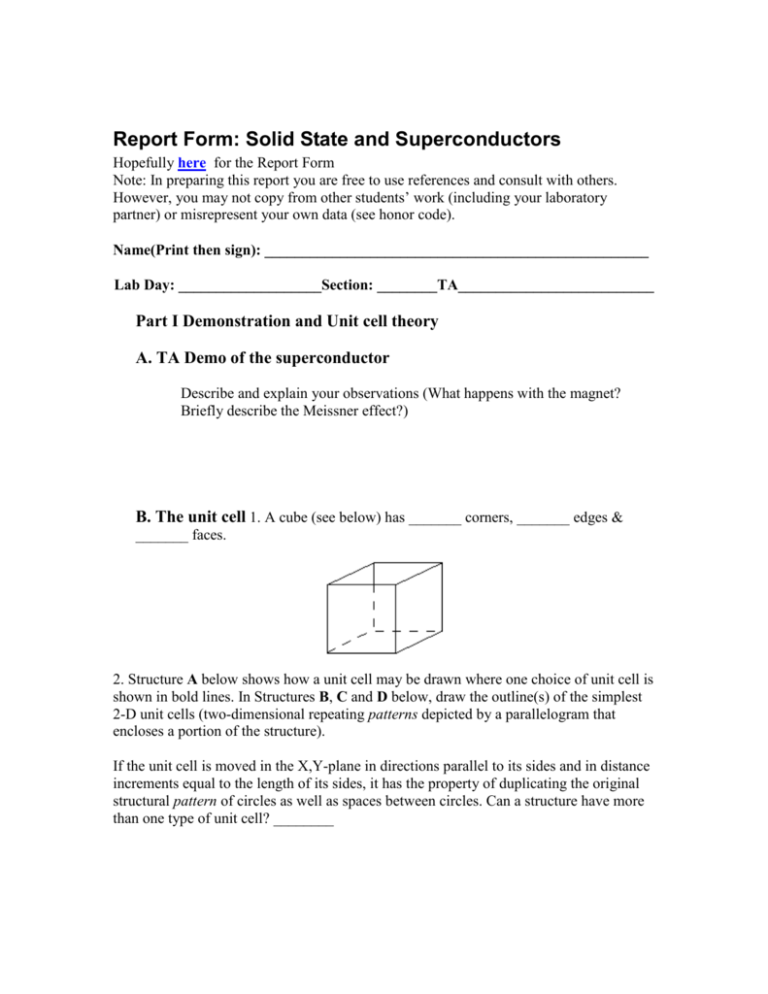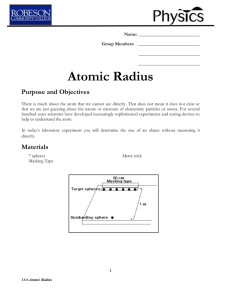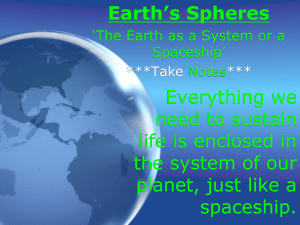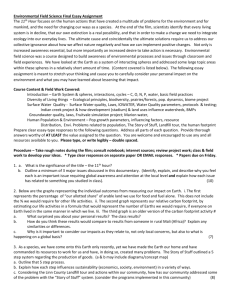Report Form
advertisement

Report Form: Solid State and Superconductors Hopefully here for the Report Form Note: In preparing this report you are free to use references and consult with others. However, you may not copy from other students’ work (including your laboratory partner) or misrepresent your own data (see honor code). Name(Print then sign): ___________________________________________________ Lab Day: ___________________Section: ________TA__________________________ Part I Demonstration and Unit cell theory A. TA Demo of the superconductor Describe and explain your observations (What happens with the magnet? Briefly describe the Meissner effect?) B. The unit cell 1. A cube (see below) has _______ corners, _______ edges & _______ faces. 2. Structure A below shows how a unit cell may be drawn where one choice of unit cell is shown in bold lines. In Structures B, C and D below, draw the outline(s) of the simplest 2-D unit cells (two-dimensional repeating patterns depicted by a parallelogram that encloses a portion of the structure). If the unit cell is moved in the X,Y-plane in directions parallel to its sides and in distance increments equal to the length of its sides, it has the property of duplicating the original structural pattern of circles as well as spaces between circles. Can a structure have more than one type of unit cell? ________ Structure A Structure B Structure C Structure D 3. If the circle segments enclosed inside each of the bold-faced parallelograms shown below were cut out and taped together, how many whole circles could be constructed for each one of the patterns: 4. Shown below is a 3-D unit cell for a structure of packed spheres. The center of each of 8 spheres is at a corner of the cube, and the part of each that lies in the interior of the cube is shown. If all of the sphere segments enclosed inside the unit cell could be glued together, how many whole spheres could be constructed? number of whole spheres: ________ 5. For each of the figures shown below, determine the number of corners and faces. Identify and name each as one of the regular geometric solids. A B A Number of corners Number of faces Name of the shape of this object B Part II Experimental I. Cubic Cells A. Simple Cubic Unit Cells or Primitive Cubic Unit Cells (P) a. How would you designate the simple cube stacking - aa, ab, abc, or some other? b. If the radius of each atom in this cell is r, what is the equation that describes the volume of the cube generated in terms of r? (Note that the face of the cube is defined by the position of the rods and does not include the whole sphere.) c. Draw the z-diagram for the unit cell layers. d. To how many different cells does a corner atom belong? What is the fractional contribution of a single corner atom to a particular unit cell? e. How many corner spheres does a single unit cell possess? f. What is the net number of atoms in a unit cell? (Number of atoms multiplied by the fraction they contribute) g. Pick an interior sphere in the extended array. What is the coordination number (CN) of that atom? In other words, how many spheres are touching it? . h. What is the formula for the volume of a sphere with radius r? i. Calculate the packing efficiency of a simple cubic unit cell (the % volume or space occupied by atomic material in the unit cell). Hint: Consider the net number of atoms per simple cubic unit cell (question g) the volume of one sphere (question i), and the volume of the cube (question b). B. Body-Centered Cubic (BCC) Structure a. Draw the z diagrams for the layers. b. Fill out the table below for a BCC unit cell Atom type Corner Body Number Fractional Contribution Total Contribution Coordination Number c. What is the total number of atoms in the unit cell? d. Look at the stacking of the layers. How are they arranged if we call the layers a, b, c, etc.? e. If the radius of each atom in this cell is r, what is the formula for the volume of the cube generated in terms of the radius of the atom? (See diagrams below.) f. Calculate the packing efficiency of the bcc cell: Find the volume occupied by the net number of spheres per unit cell if the radius of each sphere is r; then calculate the volume of the cube using r of the sphere and the Pythagoras theorem ( a 2 b 2 c 2 ) to find the diagonal of the cube. C. The Face Centered Cubic (FCC) Unit Cell a. Fill out the following table for a FCC unit cell. Atom type Corner Face Number Fractional Contribution Total Contribution Coordination Number b. What is the total number of atoms in the unit cell? c. Using a similar procedure to that applied in Part B above; calculate the packing efficiency of the face-centered cubic unit cell. II. Close-Packing a. Compare the hexagonal and cubic close-packed structures. b. Locate the interior sphere in the layer of seven next to the new top layer. For this interior sphere, determine the following: Number of touching spheres: on layer below on the same layer on layer above TOTAL CN of the interior sphere hexagonal close-packed (hcp) cubic close-packed (ccp) c. Sphere packing that has this number (write below) of adjacent and touching nearest neighbors is referred to as close-packed. Non-close-packed structures will have lower coordination numbers. d. Are the two unit cells the identical? e. If they are the same, how are they related? If they are different, what makes them different? f. Is the face-centered cubic unit cell aba or abc layering? Draw a z-diagram. III. Interstitial sites and coordination number (CN) a. If the spheres are assumed to be ions, which of the spheres is most likely to be the anion and which the cation, the colorless spheres or the colored spheres? Why? b. Consider interstitial sites created by spheres of the same size. Rank the interstitial sites, as identified by their coordination numbers, in order of increasing size (for example, which is biggest, the site with coordination number 4, 6 or 8?). c. Using basic principles of geometry and assuming that the colorless spheres are the same anion with radius r A in all three cases, calculate in terms of rA the maximum radius, rC, of the cation that will fit inside a hole of CN 4, CN 6 and CN 8. Do this by calculating the ratio of the radius of to cation to the radius of the anion: rC / rA . d. What terms are used to describe the shapes (coordination) of the interstitial sites of CN 4, CN 6 and CN 8? CN 4: ________________ CN 6: _______________ CN 8: ________________ IV. Ionic Solids A. Cesium Chloride 1. Fill the table below for Cesium Chloride Colorless spheres Green spheres Type of cubic structure Atom represented 2. Using the simplest unit cell described by the colorless spheres, how many net colorless and net green spheres are contained within that unit cell? 3. Do the same for a unit cell bounded by green spheres as you did for the colorless spheres in question 4. 4. What is the ion-to-ion ratio of cesium to chloride in the simplest unit cell which contains both? (Does it make sense? Do the charges agree?) B. Calcium Fluoride 1. Draw the z diagrams for the layers (include both colorless and green spheres). 2. Fill the table below for Calcium Fluoride Colorless spheres Green spheres Type of cubic structure Atom represented 3. What is the formula for fluorite (calcium fluoride)? C. Lithium Nitride 1. Draw the z diagrams for the atom layers which you have constructed. 2. What is the stoichiometric ratio of green to blue spheres? 3. Now consider that one sphere represents lithium and the other nitrogen. What is the formula? 4. How does this formula correspond to what might be predicted by the Periodic Table? D. Zinc Blende and Wurtzite Fill in the table below: Zinc Blende Stoichiometric ratio of colorless to pink spheres Formula unit (one sphere represents and the other the sulfide ion) Compare to predicted from periodic table Type of unit cell Wurtzite





